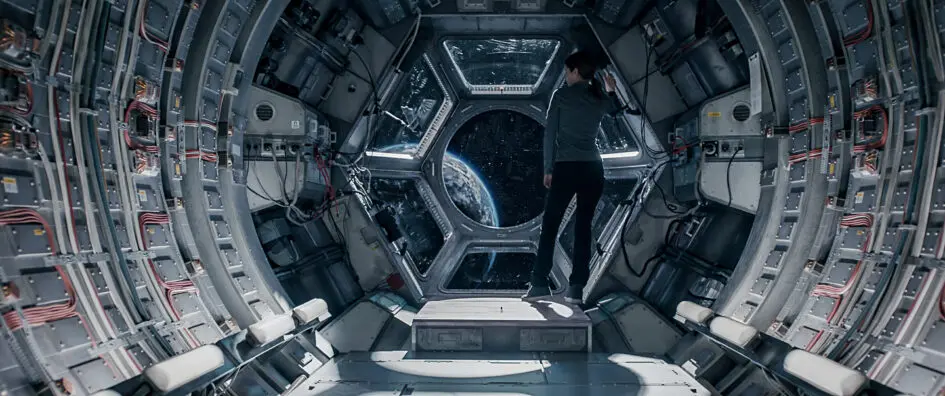Per Matt
Space tourism has received a lot of publicity lately. That makes sense, as the ground-breaking commercial industry that’s planning to transport civilians to the heliosphere will soon aid the development of deep-space exploration. Once the competition of Elon Musk (who’s already ahead in the game with Space X) and Amazon’s Jeff Bezos (of Blue Origin) perfect the art of transporting humans to the boundaries of planet Earth, the next logical step seems to be to the Moon… and eventually Mars. As the privatization of space travel welcomes the general public, what would happen if someone snuck aboard these companies’ rocket ships? Better yet, what would happen if someone snuck onto a ship that was bound for Mars, with no way off? This hypothesis is presented in the Netflix feature film, Stowaway.
In the movie, Hyperion (a private company) trains a three-person team (played by Toni Collette, Anna Kendrick and Daniel Dae Kim) for a two-year mission to Mars and back. Unfortunately, alternate plans crash down onto the astronauts after liftoff, as a member of the launch crew (Shamier Anderson) awakens in outer space, unaware of how he got there. Now the drama truly begins.
With a damaged life-support system and not enough backup oxygen cannisters to keep all four people alive, one possibility is for the algae science experiment to take place within the ship (instead of happening on the Martian surface) to possibly survive the one-way trip to Mars, but the culture could be lost if there’s any complications along the way. There are other options (including an assisted suicide that doesn’t receive much attention), but the last-ditch effort involves a very complicated spacewalk. The stakes are high, the drama is thick and never forget that when in outer space, everything is constantly trying to kill you…
On a spaceship that was overbuilt for two astronauts, there’s just not enough oxygen for four people in its damaged state.
As I was watching, all sorts of ideas kept popping into my head: Do these people have enough fuel for their mission with another person onboard? Will there be enough food? I kept expecting something big to go really, really bad and for there to be some sort of horror theme creeping in, with the new guy going a little batty within a confined space, but that never really happens.
When Shamier’s character awakens, he experiences claustrophobia, homesickness and feeling like a stranger in a strange land, but he never actually develops. He’s never really given the opportunity to become the hero, while only being the center of everyone’s burden. So, he doesn’t have much to do. I was definitely expecting more from the screenwriters. The only other complaint I had was scientific in nature. Interstellar communication doesn’t seem to be a problem here, as there’s no lag time from outer-space transmission to receiver on planet Earth. While it could be considered nitpicking, that point was glaring to me, which made me question the rest of the science fact within this story.
Recently, I’ve really enjoyed watching smaller stories based on the real world and this is definitely that, with only four actors appearing onscreen. The elaborate set of the spaceship kind of feels out of place for what feels like a small-budget film (I’m assuming the set expenses took up most of its budget). The production designs and the special effects look great while posing many What If Scenarios.
Stowaway feels like a precautionary tale, as commercial companies prepare for deep-space missions and this story could actually become a reality someday, but the public will most likely never hear about it, due to stockholders’ interests. Contingency plans upon contingency plans might just have to be considered, as the unpredictability of dangers is actually quite predictable, which makes it even more of a job hazard to venture out to Mars and back.
Sacrifices, at some point in time, will have to be made, in order to complete that mission. And until then, surely Bezos and Musk will be losing a lot of sleep, thanks in part, to Stowaway.
